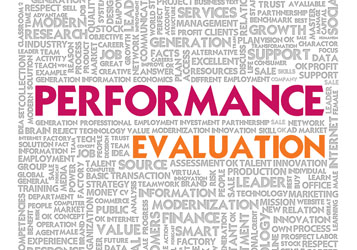Performance review meetings can bring stress to both sides of the table. But it doesn’t have to be that way. With the right planning by supervisors, the meeting can be a productive, stress-free event. Business Management Daily’s Editorial Director Pat DiDomenico describes the top five things you can do to improve your performance reviews.
#1: Keep a performance log for every employee. How many times have you sat down to write a review and you can only remember what the person has done in the last few weeks or the last month? Or maybe you allow one single incident, either good or bad, to color your assessment. That’s why the best way to prepare is to take notes throughout the year. To do that, keep a performance log for each and every employee. This can be as simple as notes on paper or in a Word document.
A few key points about performance logs: Include notes on both positive and negative work habits, avoid making references to protected characteristics, like race, age or gender, and don’t make assumptions about the reasons for a behavior or work habit — just stick to the facts, and assume that the notes could someday be read in court — because they could.
#2: Be aware of employees’ main concerns. Employees are understandably anxious about reviews. Does the employee know the expectations that he’ll be evaluated on? And were those expectations explained in advance? Will there be any surprises? Have you been giving the employee feedback throughout the year? Will the evaluations be honest and unbiased? Will the manager listen to what the employee has to say? And how does this review affect the employee’s pay? Be prepared for the employee’s questions and concerns, and you’ll be better prepared to handle them.
#3: On review day, create the right atmosphere. Your goal is to help the employee feel at ease. So hold the review in a private, neutral environment, such as a small conference room. You want a setting that supports discussion and cooperation, not confrontation. Sit next to the employee if possible, not across the table or across the desk. Schedule the time in advance with the employee’s input. Avoid meeting during a busy or stressful time for the person. And don’t squeeze it in between meetings or before a lunch. Finally, eliminate all interruptions and focus solely on that review.
#4: Cite specific examples of good and bad work. Stay away from broad generalizations about the employee’s work. Specifics will help you point out exactly what the employee needs to do to improve. For example, you don’t want to tell an employee, “You didn’t get your work done on time.” Instead, say something like, “Over the past six months, you’ve submitted six of your nine customer reports at least three days late.” Those specifics will really help the employee understand — and help your review stand up in court if it ever becomes an issue.
#5: Remember the ABCs of giving feedback.
A — Accurate: Offer objective, concrete examples backed by your performance log notes. You want to avoid words like “always” or “never.” Those are exaggerations that don’t usually reflect the realistic frequency of the way employees behave.
B — Business-oriented: Focus on the business reasons for the corrective comments. Stay away from any critiques about the employee’s personality or behavior.
C — Consistent: Remember to provide regular feedback throughout the year. Don’t dump it on the employee all at once during performance review time. It’s not fair to the employee and it’s not fair to you. Consistency is the key to improving performance.
See the video: http://youtu.be/Wk1lJK7gzQ0
————
Copyright 2016 – Business Management Daily
Thanks for reading CPA Practice Advisor!
Subscribe Already registered? Log In
Need more information? Read the FAQs
Tags: Firm Management, Payroll, Staffing




